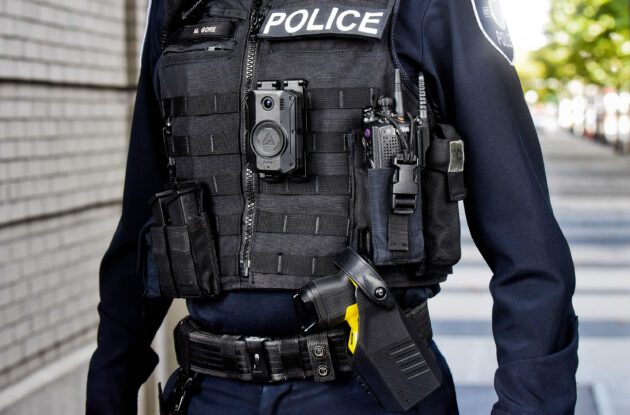- Axon unveils “Draft One,” an AI designed to automate police report generation from body cam audio.
- Concerns arise regarding the potential exacerbation of institutional issues like racial bias within law enforcement.
- Despite claims of error reduction, skepticism persists due to AI’s propensity for factual inaccuracies.
- Public reception remains contentious, with social media outcry highlighting concerns over AI-induced upheaval and lack of oversight.
- Axon’s controversial history adds to the skepticism surrounding its latest AI venture.
Main AI News:
Taser manufacturer and law enforcement partner Axon has introduced “Draft One,” an AI innovation poised to revolutionize police reporting by transcribing body camera audio into comprehensive reports automatically. According to Forbes, this advancement raises critical concerns regarding its potential implications, particularly in exacerbating existing institutional issues such as racial bias within police departments. Moreover, the inherent risk of AI models fabricating information could instigate chaos and unfounded allegations.
Dave Maass, the Electronic Frontier Foundation’s director of surveillance technologies investigations, expressed apprehension, stating, “It’s kind of a nightmare.” Maass cautioned that law enforcement, lacking expertise in AI intricacies, might unwittingly utilize these systems, potentially impacting millions within the criminal justice system.
Axon touts its new AI, developed based on OpenAI’s GPT-4 large language model, as a solution to streamline report writing for officers, potentially reclaiming a quarter of their time. Axon CEO Rick Smith articulated, “If an officer spends half their day reporting, and we can cut that in half, we have an opportunity to potentially free up 25 percent of an officer’s time to be back out policing.”
However, concerns persist over the reliability of OpenAI’s models, which are notorious for factual inaccuracies and the perpetuation of racial biases present in their training data. Despite Axon’s assurances of modifying the AI to mitigate errors, skepticism lingers regarding its efficacy, especially in a critical context like law enforcement.
Noah Spitzer-Williams, principal AI product manager at Axon, assured, “We have turned off the creativity,” emphasizing a reduction in errors. Yet, questions arise concerning the acceptability of a tool prone to mistakes in policing scenarios.
Regarding racial bias, Axon claims tests revealed no significant differences among races during trials. Nevertheless, doubts persist, prompting the company to emphasize human oversight through meticulous review procedures.
Despite Axon’s reassurances, public reception remains contentious. Social media erupted with criticism, with concerns ranging from the potential for AI-induced upheaval in people’s lives to the lack of oversight over police technology corporations.
Moreover, Axon’s controversial history, including the mass resignation of ethics board members in response to previous initiatives and reports of coercive company culture, further heightens skepticism surrounding its latest AI venture.
Conclusion:
Axon’s introduction of “Draft One” signifies a significant advancement in law enforcement technology. However, lingering concerns over potential biases, inaccuracies, and lack of oversight raise considerable challenges for its acceptance in the market. As the industry continues to grapple with ethical implications and technological limitations, stakeholders must prioritize transparency, accountability, and rigorous testing to ensure the responsible deployment of AI-driven solutions in policing.

